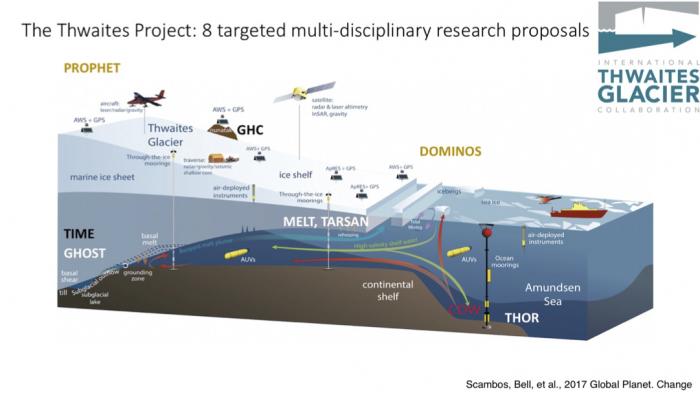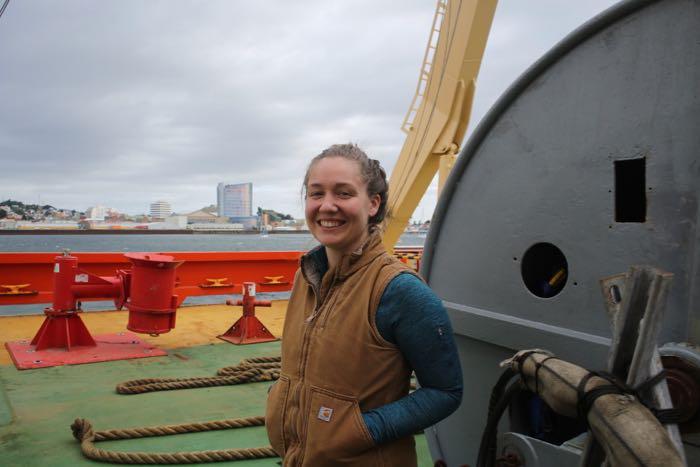Getting My Sea Legs
I'm just wrapping up my first 24 hours as a full-time resident of the ship and have learned quite a bit already. The Chief Mate gave an inspiring and informative safety talk that included many helpful tips, such as:
- If you ever find yourself in a situation where you are writing an "Out of Order" sign for something, call the bridge. The bridge is the location from which the Captain and the Chief Mate oversee all the activities on the ship.
- If you ever find yourself in a situation where you are trying to open something with a pry bar, call the bridge.
- If you ever find yourself in a situation where the room you are in looks like the galley, leave immediately. The galley is the ship's kitchen and passengers are NOT allowed in it.
In addition to learning the rules of the ship, I've been working on getting to know all of the diverse research efforts taking place on this expedition. Fifteen of the scientists onboard are part of the Thwaites GlacierA mass of ice that persists for many years and notably deforms and flows under the influence of gravity. Offshore Research or THOR project, and are using sediment cores, detailed mapping of the sea floor, and oceanography to decipher the recent past history of Thwaites and other areas of the west Antarctic Ice Sheet. I'll be telling you all about their work as I learn more about it myself, as well as how the THOR project fits into the goals of the International Thwaites GlacierA mass of ice that persists for many years and notably deforms and flows under the influence of gravity. Collaboration.

STEM Careers
Today was my only chance to talk with Emily Hart, who is a Support Geophysicist with Geometrics. Geometrics builds and customizes devices that can collect data about things underground in situations where digging is not an option. The device that she brought on the Palmer is called a Streamer and can collect information about the shape and composition of the sea floor. Emily has a type of STEM career that I never realized existed: she uses her engineering design skills to create products that meet the needs of researchers in the field and then she gets to travel all around the world, helping to set up and test her company's equipment. She was on the Palmer for just a couple of days, conducting some test deployments of the Streamer before we departed, but sometimes she stays with an expedition for multiple days – one time, she traveled for two weeks through the Java Sea from Indonesia to Australia which seemed like fun to me, but she said the boat was on lock-down almost every night over fear of pirates. Having a job that causes you to occasionally be threatened by pirates sounds even cooler than when my sister Julie had a job where her title had the word "Czar" in it.



Comments